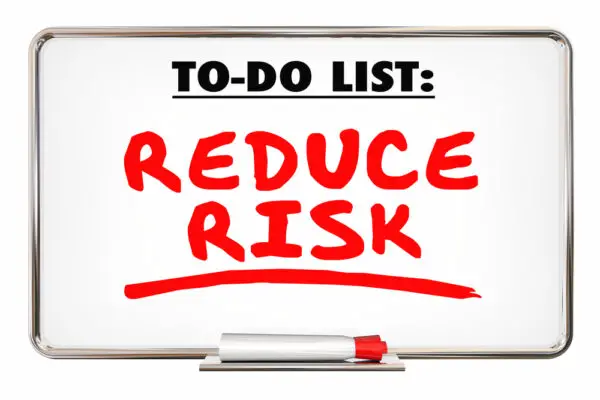Celgene REMS (Risk Evaluation and Mitigation Strategies) are safety programs implemented by the biopharmaceutical company Celgene for certain medications to manage known or potential serious risks associated with these drugs.
REMS programs are designed to ensure that the benefits of a medication outweigh its risks.
For example, the Celgene REMS programs for drugs like REVLIMID, POMALYST, and THALOMID involve measures such as prescriber certification, pharmacy certification, and patient education to prevent fetal exposure and to inform about potential blood clots and other serious side effects.
Celgene REMS, which stands for Risk Evaluation and Mitigation Strategy, is a comprehensive program implemented by Celgene Corporation to ensure its medication’s safe and appropriate use.
This discussion aims to provide an overview of Celgene REMS, including its purpose, goals, components, requirements, and implementation process.
By delving into the importance of Celgene REMS in patient safety, we will explore how this strategy plays a crucial role in safeguarding the well-being of individuals who rely on Celgene’s therapies.

Stay tuned to uncover the key elements of this essential risk management system.
Key Takeaways
- Celgene REMS is a risk management program implemented to ensure safe and effective medication use.
- The FDA oversees and evaluates Celgene REMS to minimize drug-related risks and ensure patient safety.
- The program includes components such as prescriber and patient education, medication guides, and specific requirements for healthcare providers and patients.
- Celgene REMS collaborates with Bristol Myers Squibb to offer affordable drugs and gathers feedback through voluntary patient surveys for program improvement.
Overview of Celgene REMS
Implementing Risk Evaluation and Mitigation Strategies (REMS) is of utmost importance in ensuring the safe use of medications.
The U.S. Food and Drug Administration (FDA) plays a crucial role in overseeing the development and enforcement of REMS to minimize risks associated with certain drugs.
Importance of Risk Evaluation and Mitigation Strategies (REMS)
Risk Evaluation and Mitigation Strategies (REMS) play a crucial role in ensuring the safe and effective use of medications.
This is particularly evident in the comprehensive approach adopted by Celgene REMS. As a manufacturer of drugs and medication products, Celgene recognizes the importance of managing risks associated with its products.
Celgene aims to address potential risks and ensure patient safety through its risk management programs.
This is especially important in the face of generic competitors. Celgene REMS helps to maintain the highest standards of safety and efficacy.
Role of the U.S. Food & Drug Administration (FDA) in Ensuring Safe Use of Medications
With the aim of ensuring the safe use of medications, the U.S. Food & Drug Administration (FDA) plays a crucial role in overseeing and evaluating the risk management strategies implemented by pharmaceutical companies like Celgene REMS.
The FDA is responsible for safeguarding patient safety and ensuring pharmaceutical companies comply with regulations.
To achieve this, the FDA utilizes various mechanisms such as medication guides, restricted distribution programs, and generic competition to mitigate risks associated with generic drugs, birth defects, and teratogenic risks.
Purpose and Goals
The purpose and goals of Celgene REMS are essential to understand to grasp its impact on patient safety and drug distribution fully.
By examining the purpose of Celgene REMS, we can gain insight into the specific objectives it aims to achieve.
Additionally, it is important to explore the specific drugs covered by Celgene REMS to comprehend the scope and reach of its implementation.
Understanding Celgene REMS
What is the purpose and goals of Celgene REMS?
Celgene REMS, a risk evaluation and mitigation strategy implemented by Celgene Corporation, aims to ensure the safe use of its medications in the market.
The program involves various stakeholders, including companies, pharmacies, and generic manufacturers, to distribute and monitor the medication’s usage.
The goals of Celgene REMS are to minimize the risk of exposure, particularly embryo-fetal exposure, and to establish safe-use conditions for the medication.
Purpose and Objectives of Celgene REMS
The primary objective of the Celgene REMS program is to ensure the safe and appropriate use of their medications by implementing risk evaluation and mitigation strategies.
Specifically, the program aims to address safety concerns related to the use of lenalidomide, a medication associated with the risk of embryo-fetal toxicity and birth defects.
Through the lenalidomide REMS program, patients are categorized based on their risk level, and appropriate precautions, such as the use of effective contraception, are outlined in the patient package insert to minimize the risk of congenital malformations.
The REMS program also ensures access to thalidomide, another medication with known teratogenic effects, is restricted to prevent similar safety concerns.
Specific Drugs Covered by Celgene REMS
The Celgene REMS program covers specific medications that have been identified to pose potential risks to patient safety. These medications include:
- Brand-name drugs contain the active ingredient lenalidomide, which is used to treat multiple myeloma and certain types of lymphoma.
- Generic versions of lenalidomide.
- Drugs that have been studied and found to have an increased risk of birth defects.
- Medications that require special handling or monitoring are only available through specialty pharmacies.
The Celgene REMS program ensures patients and healthcare providers access these medications while ensuring their safety.
Components and Requirements
The components of the Celgene REMS program include various elements designed to ensure the safe and appropriate use of Celgene medications. These components may include:
- Prescriber education
- Patient education materials
- Medication guides
In addition to these program components, there are specific requirements that healthcare providers and patients must meet to participate in the program.

Program Components
Program Components for Celgene Rems include various elements and requirements. These components are designed to ensure the safety and effectiveness of their drugs. The program includes:
- Providing educational materials on the risks of birth defects for female patients
- Distributing samples of drugs used to treat erythema nodosum leprosum
- Collaboration with Bristol Myers Squibb to offer affordable drugs
- Conducting voluntary patient surveys to gather feedback
Celgene Rems also follows guidelines set by the US Food and Drug Administration and provides a brochure categorizing drugs by risk. This demonstrates their commitment to safety.
Necessary Requirements
To ensure the safety and effectiveness of their drugs, Celgene Rems implements necessary requirements and components.
These requirements are in line with the guidelines set by the Food and Drug Administration (FDA) to minimize the risks of severe birth defects associated with the use of lenalidomide.
With strict patient education and healthcare professional involvement, Celgene Rems ensures that lenalidomide is distributed and used safely.
The program emphasizes the importance of patient education and adherence to birth control measures to prevent fetal exposure in the pharmaceutical industry.
Implementation Process
The implementation process of Celgene Rems involves two key aspects: the implementation timeline and staff training requirements.
The timeline for implementation outlines the steps and timeframe for integrating the Celgene Rems system into the existing operations.
Additionally, training requirements for staff ensure that they are equipped with the necessary knowledge and skills to utilize the Celgene Rems system effectively.
Both these aspects are crucial for a successful implementation of Celgene Rems.
Timeline for Implementation
The process of implementing the timeline for Celgene Rems involves careful planning and execution. This includes the following key steps:
- Implementing birth control measures to mitigate liability risks.
- Ensuring adherence to birth control through patient education activities.
- Enforcing rigorous controls through safe-use messages and mandatory surveys.
- Taking adequate precautions to ensure patient commitment extends throughout the implementation process.
Training Requirements for Staff
Staff members involved in the implementation process of Celgene Rems are required to undergo training to ensure a smooth and effective execution of the program.
Celgene recognizes the importance of adequately preparing staff for their roles within the REMS program.
Training programs are designed to equip employees with the necessary knowledge and skills to comply with the requirements of Celgene Rems.
By providing comprehensive staff training, Celgene aims to enhance patient safety and improve the overall effectiveness of its REMS programs.
Importance in Patient Safety
Celgene Rems plays a crucial role in ensuring patient safety.
The Celgene REMS program includes various measures to safeguard patients.
These measures include rigorous drug testing to ensure the safety and efficacy of brand-name drugs and generic products.
Bioequivalence testing is conducted to ensure that generic products are as effective as their brand-name counterparts.
Medication guide assessments are carried out to provide comprehensive information to patients.
Healthcare providers must also comply with the program to maintain high levels of patient safety.
Frequently Asked Questions
How Long Does It Take for Celgene REMS to Be Implemented?
The implementation time for Celgene REMS varies depending on various factors, such as the program’s complexity, the organization’s size, and the resources available.
It is best to consult with Celgene directly for a specific timeline.
Are There Any Penalties for Non-Compliance With Celgene Rems?
Non-compliance with Celgene REMS may result in penalties. It is important for healthcare professionals and patients to adhere to the program’s requirements to ensure patient safety and regulatory compliance.
Can Healthcare Providers Access Patient Data Through Celgene Rems?
Healthcare providers cannot access patient data through Celgene REMS. Celgene REMS, or Risk Evaluation and Mitigation Strategy, is a program designed to ensure safe prescribing, dispensing, and use of Celgene products, but it does not involve sharing patient data.
Does Celgene REMS Apply to All Medications Produced by Celgene?
Celgene Rems is a Risk Evaluation and Mitigation Strategy implemented by Celgene Corporation. While it applies to certain medications produced by Celgene, it does not necessarily apply to all medications manufactured by the company.
Are there any specific training requirements for healthcare providers involved in Celgene REMS implementation?
There are specific training requirements for healthcare providers involved in Celgene REMS implementation.
These requirements ensure that providers have the necessary knowledge and skills to administer Celgene medications safely and effectively and manage associated risks.

Conclusion
In conclusion, Celgene REMS is an important program to ensure patient safety. The program has specific components and requirements that need to be implemented. By adhering to these guidelines, Celgene aims to achieve its purpose and goals of providing safe and effective medications to patients.
Celgene REMS’s implementation process is crucial in maintaining patient safety throughout the treatment journey.

Chris Ekai is a Risk Management expert with over 10 years of experience in the field. He has a Master’s(MSc) degree in Risk Management from University of Portsmouth and is a CPA and Finance professional. He currently works as a Content Manager at Risk Publishing, writing about Enterprise Risk Management, Business Continuity Management and Project Management.

